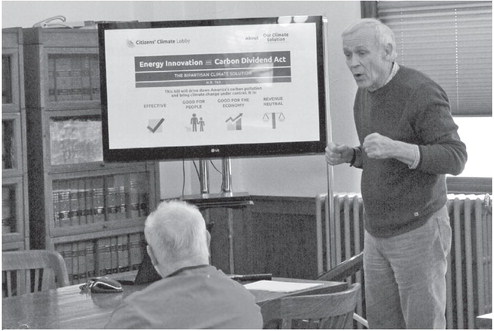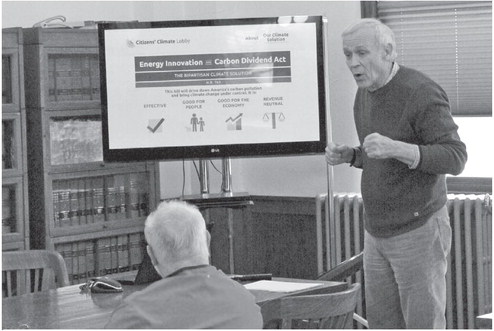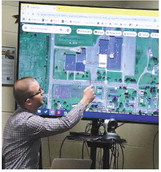Control structure is major gap in dam cost estimates


Flambeau called for keeping stop log water control, Ayres calls for a concrete spillway at Chelsea Dam
An apple to apples comparison of engineering estimates for the replacement of the Chelsea Lake Dam showed that while some items were missed in the original estimate, the bulk of the cost difference is in the water level control structure.
Members of the Taylor County Forestry committee last month voted to hire Oakridge Engineering to do an independent review of both the preliminary estimate from Flambeau Engineering and the Ayres Associates engineering estimate for the dam project. The Ayres project costs were significantly higher than those in the Flambeau design.
On Friday, committee members received the side-byside comparison showing that while many of the costs areas were similar, the Flambeau Engineering estimate had not included filter expenses to prevent silt contamination of the lake water. Even taking that out, of both estimates Oakridge prepared its own estimate based on the specifications given to Flambeau and came back with a report that the cost for replacing what is currently there with an identical structure would be about $90,000, about double what Flambeau’s estimate was with major cost differences in mobilization, site access and dewatering.
“What we draw from this is that Flambeau really missed the mark,” said committee member Gene Knoll.
County forest administrator Jake Walcisak said that they had not asked Oakridge to do the extra evaluation but that the company chose to submit it on its own.
The biggest difference between the two engineering options is how the water level is controlled. Water level in the lake is currently controlled by a series of boards, removing boards lowers the water level, adding boards increases the water level. The water control in the Ayres plan includes a U-shaped concrete structure that is set to a specific height. The water level would be self regulating at that height and require no additional staff time to check on it before or after rain events. Currently, if a heavy rain is anticipated the forestry personnel must go out before it rains to remove stop logs and replace them when the water level goes down.
The county is seeking a state grant which would reimburse half the expense of the dam project. With construction oversight and bidding expenses, Walcisak said the entire project is expected to cost about $200,000.
Committee member Mike Bub noted that under the county ordinance any purchases over $100,000 require approval by the full county board. He said he felt that with the changes in the project to include the upgraded spillway and going from a 45-year expected lifespan to an 80-year expected lifespan that it should go back to the full board for formal approval.
Committee chairman Chuck Zenner noted that applying for the grant was already included in the amount paid to Ayres for the design work and even if the county is successful in getting grant funding, the county board could change its mind and not do the project.
In other dam action, the committee also received an update on the engineering estimates for the replacement of the Camp 8 dam at $266,961 and approved hiring a diver to examine the sluice gate at Miller Dam.
There is concern that the stem guide which controls the water volume released through the sluice gate is broken, or bent or that there is a hole in the gate allowing more than desired water flow. As part of the routine dam maintenance, the county is looking at if the gate can be repaired or if the mechanism will have to be replaced.
Attempts to use an underwater camera on a pole to view the gate were hampered by poor visibility. On the advice of Adam Schneider and engineer with Ayres, the county will hire a commercial diver to exam and if possible repair the gate.
Walcisak noted that in the worst case, this would move replacement of the sluice gate up to being done in 2022 or 2023.
“We have to fix it,” Zenner said, noting it was part of the dam maintenance and a popular destination for the county.
In other business, committee members:
_ Listened to a presentation from Bill Bussey a retired Ashland-area attorney on behalf of Citizens’ Climate Lobby. Bussey was asking the county to sign onto a resolution supporting Congressional passage of the Energy Innovation and Carbon Dividend Act (H.R. 763). The bill seeks to combat the use of greenhouse-gas causing fossil fuels by imposing a per ton tax on fossil fuels such as coal and oil. The hope is that as the price of oil and coal increases, there would be a greater incentive to conserve or develop alternative energy sources. Bussey said for households the actual cost would be neutral because as part of the act the federal government would pay a rebate of $45 per person per month. He noted that for a family of four this would be close to $300 per month.
Bussey cited a long list of economists who support the measure as being a market-based approach.
Bub said he had doubts about the federal government actually following through with paying the rebates. “I don’t exactly trust them, their track record on it sucks,” he said.
Zenner also raised doubts about the measure noting that many power companies such as Dairyland Power, which provides power to Taylor Electric Cooperative are working toward a 2050 goal of phasing out coal plants, but that they did not want to commit over concerns they may not be able to make it happen.
_ Received an update on the purchase of a new plow for the pick-up truck for the forestry department. The plow will be purchased from a dealer in Phillips. Zenner questioned why it was being purchased out of the area. “We did shop local,” Walcisak said, but noted they checked with local vendors for the plow they needed and said the one they purchased was “significantly cheaper” than the cost of buying from a local vendor.
_ Denied a request from a logger to amend their logging contract to allow them to have a far lower bond level as they finish up work on the project. Due to wet weather, the logger was unable to complete the project by Dec. 31 when his bond expired. The bond is a pledge through a financial institution that expenses up to the bond amount will be covered even if the logger defaults on the contract. The county has been in contact with the logger for months about getting the bond extended and offered alternatives which Walcisak said were refused. Instead the logger wanted to have a bond of just $500 which is the estimated remaining cost of cleaning up the logging site. Committee member Gary Beadles, who is himself a logger, said the county needs to be fair to all loggers and stick with the contract. “It sounds like he is bull-headed,” Beadles said, noting the department staff has attempted to work with the individual.
The committee voted to give the logger until January 20 to renew the bond or the county will contact the lending institution and withdraw an amount of funds necessary to cover potential county expenses to finish the project and hold it until the work is completed.





